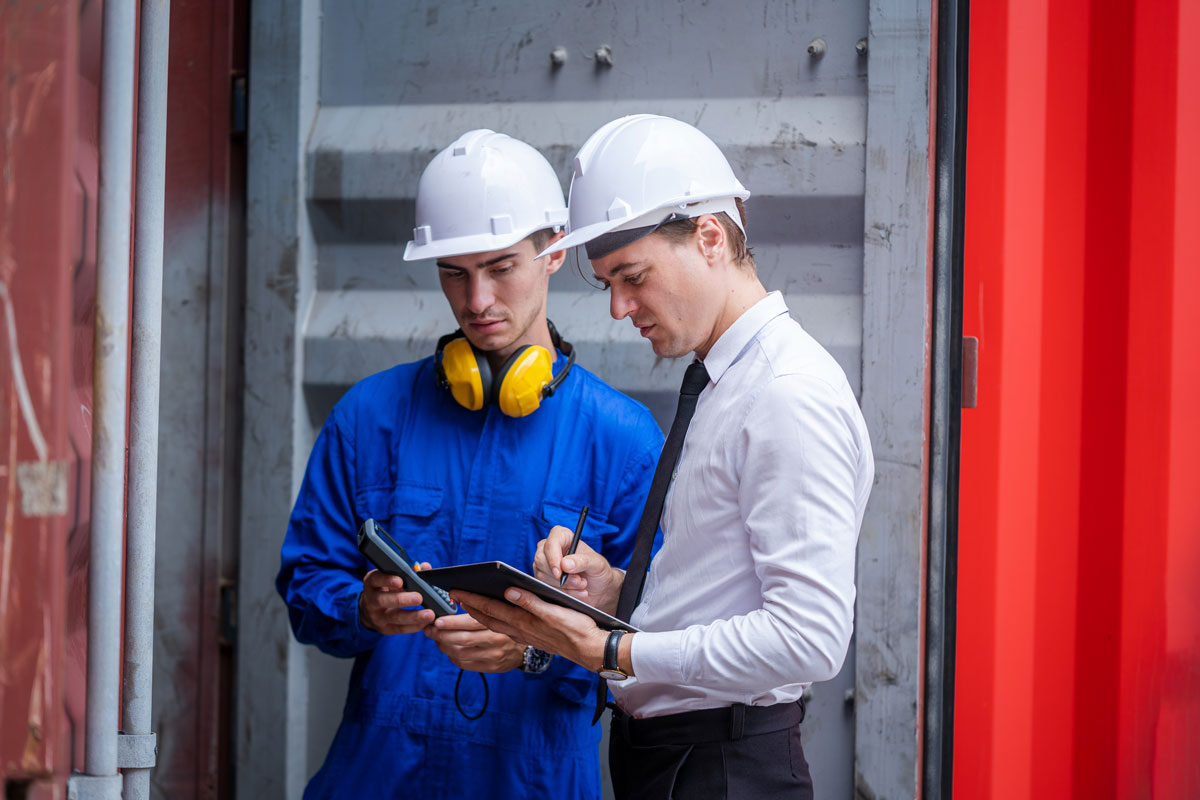
The rise of artificial intelligence (AI) and machine learning (ML) is revitalizing the supply chain sector, promising a new world where every movement is calculated for optimum efficiency. However, some terminal operators may be unsure about this technology due to investment costs and uncertain ROI.
Let’s explore the potential of AI – its possibilities, risks, and benefits – and how its limitations or perceived challenges impact adoption and effective usage in terminal operations.
The Emerging Era of Predictive Analytics
AI encompasses systems designed to perform tasks that typically require human intelligence, such as decision-making and pattern recognition. ML, a subset of AI, involves algorithms that learn from data to make informed predictions or decisions. These technologies can be applied in terminal operations in a variety of ways such as optimizing processes, improving safety, and reducing equipment wear and tear.
AI can fine-tune vessel management and container throughput in previously unimagined ways.
For instance, AI-driven predictive analytics can predict the best times for docking and unloading, thereby cutting wait times and increasing throughput. It can also be used to forecast equipment failures, enabling preventative maintenance and minimizing downtime. ML algorithms can analyze vast datasets to optimize container stacking, reducing rehandling and improving overall yard efficiency.
One terminal operator used ML to achieve a mere 1% reduction in rehandles in a dataset of 1 million containers, which resulted in annual savings of €800,000.Elsewhere, a pilot project by Algeciras Bay Port Authority (APBA) saw a 7% improvement in the accuracy of its Estimated Time of Arrival (ETA) predictions, thereby reducing ship wait times, fuel consumption, and CO2 emissions.
That’s a promising development, as the International Maritime Organization wants to cut emissions by 20% by 2030. Reuters has suggested that AI technologies might reduce the shipping industry’s carbon emissions by 47 million tonnes annually.
AI can even boost safety by enabling automated object detection, alerting operators to potential hazards in real time, and contributing to a safer working environment.
These case studies indicate that AI and ML are set to become integral to modern terminal operations. Still, some terminal operators are wary of becoming too reliant on this technology. Even a fleeting, temporary failure, let alone an organized cyber attack, could be extremely costly. After all, ports and terminals are critical infrastructure, and breaches can have disastrous consequences.
The Importance of KPIs, Data Quality and Governance
Any effective integration of AI into terminal operations demands a well-thought-out strategy with measurable Key Performance Indicators (KPIs) to ensure a clear path to ROI.
Terminal Operating Systems (TOS) and digital twins are also useful here. A sophisticated TOS can help operators manage everything from vessel arrival to cargo release, while digital twins are used to fashion a virtual replica of the actual physical terminal. This allows for a lifelike, holistic simulation to fine-tune your operations and test ‘what-if’ scenarios in a risk-free environment.
Remember that the effectiveness of AI and ML systems hinges on the quality of your data. Clean, structured, and well-governed data is essential for accurate predictions and reliable outcomes. In terminal operations, data is sourced from various points and systems, including sensors, cameras, and operational logs. It’s crucial to ensure that this data is consistent and properly managed.
Computer Vision and Machine Learning
Computer vision and ML are transforming how terminals monitor and manage assets. Optical character recognition (OCR) technology, for example, automates the identification of containers, chassis, and seals, expediting processing times and reducing manual errors.
However, challenges persist, such as ensuring consistent data inputs and accurately detecting damages. Ongoing advancements in computer vision aim to address these issues, expanding its applications in terminal operations. The future holds promise for more sophisticated systems capable of complex tasks like detecting hidden compartments or predicting equipment wear.
Governance and Security in AI Implementation
Deploying AI in terminal operations necessitates robust governance and security measures. Leadership support is vital for successful AI integration, ensuring alignment with organizational goals and regulatory compliance. Clear governance structures facilitate responsible AI use, addressing ethical considerations and mitigating risks.
Cybersecurity is another critical aspect, as AI systems can be targets for cyber threats. Of course, terminals should always implement the most stringent security protocols to protect sensitive data and maintain operational integrity. Any terminal operator looking to implement AI should first seek to build a culture that emphasizes both innovation and a high-security environment.
Future Outlook and Recommendations
The trajectory of AI and ML in terminal operations points toward increased automation, better decision-making, and improved resilience. We recommend that terminal operators start with targeted small-scale AI projects based on clear objectives and geared towards measurable outcomes. Taking a measured approach will allow you to see the operational benefits firsthand and increase confidence in the potential of AI.
It’s also a good idea to invest in data management. Closely scrutinize your data quality and governance to ensure that all AI systems are provided with reliable information. After all, your system is only ever as good as the data you feed into it. Remember that AI is not just about plugging in new technology; interoperability, training, and a strong cybersecurity setup are all important considerations.
Tideworks is dedicated to unlocking the potential of AI-driven solutions for terminal operators and is eager to partner with you to pilot innovative use cases that deliver measurable benefits. Connect with one of our team members to learn more.
